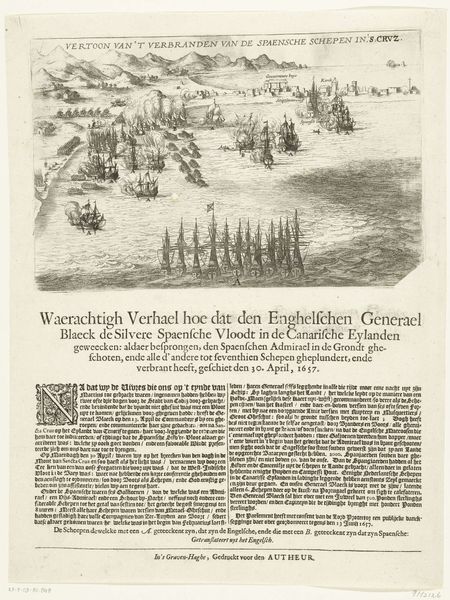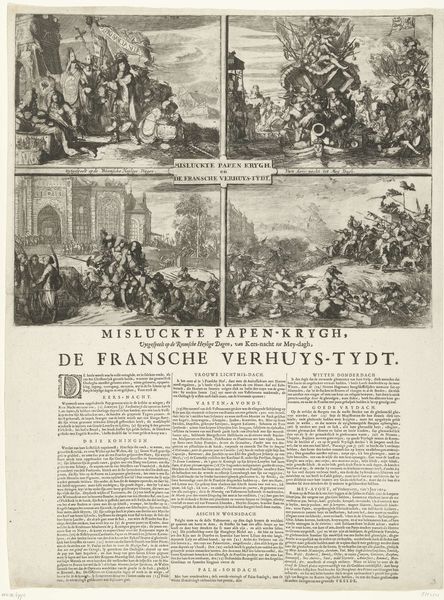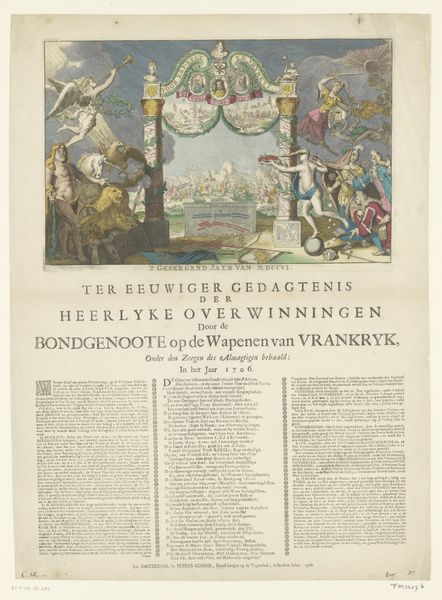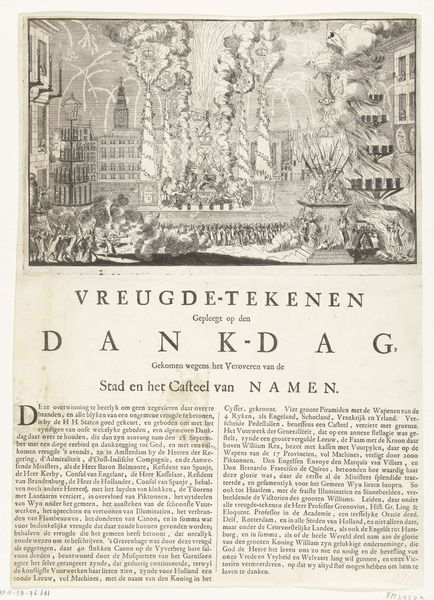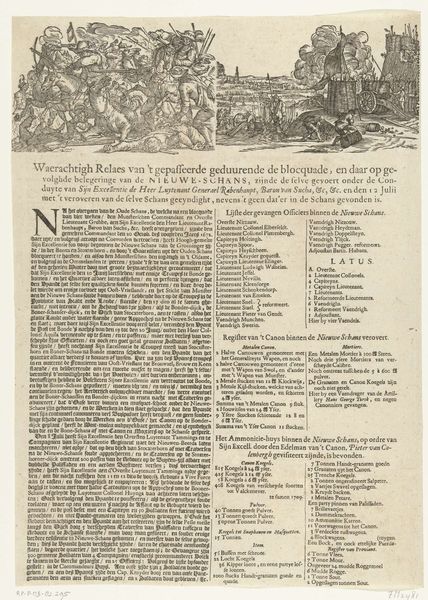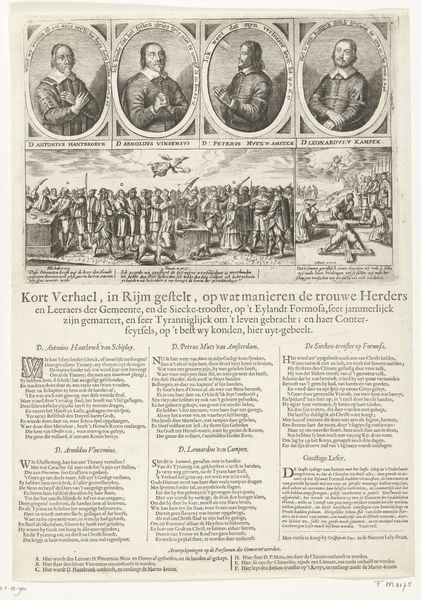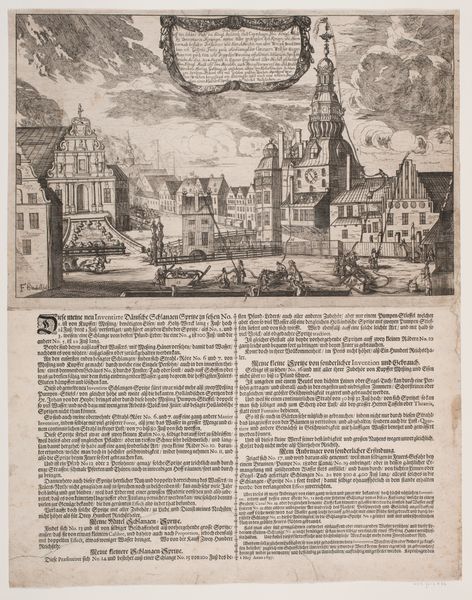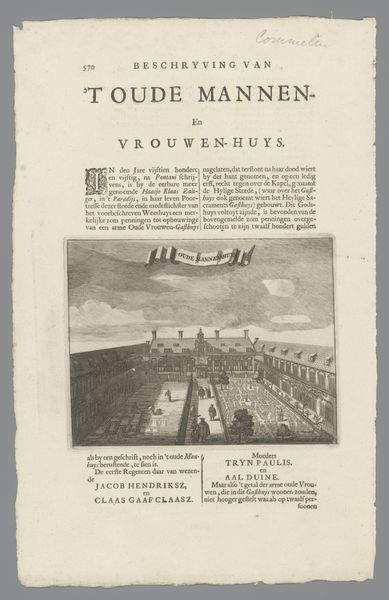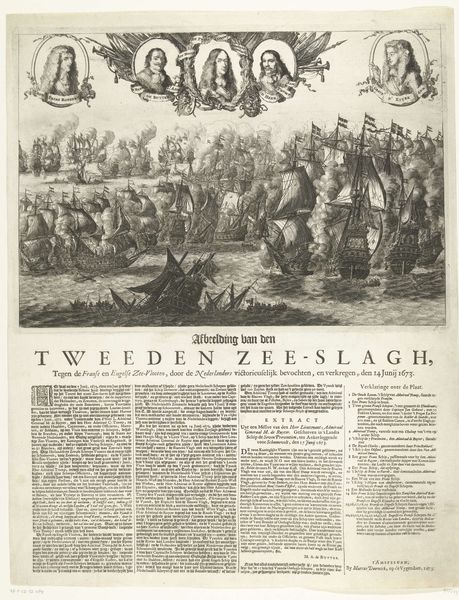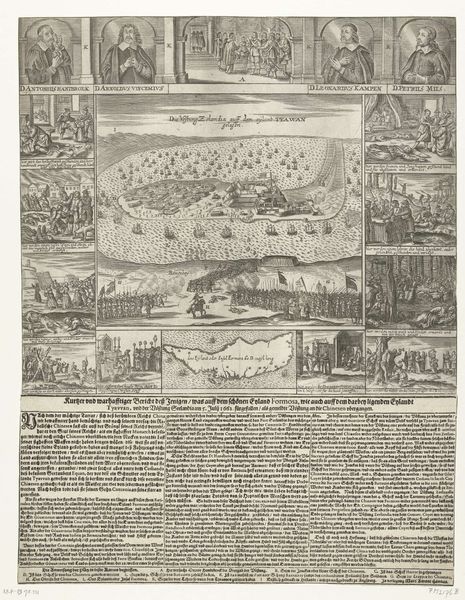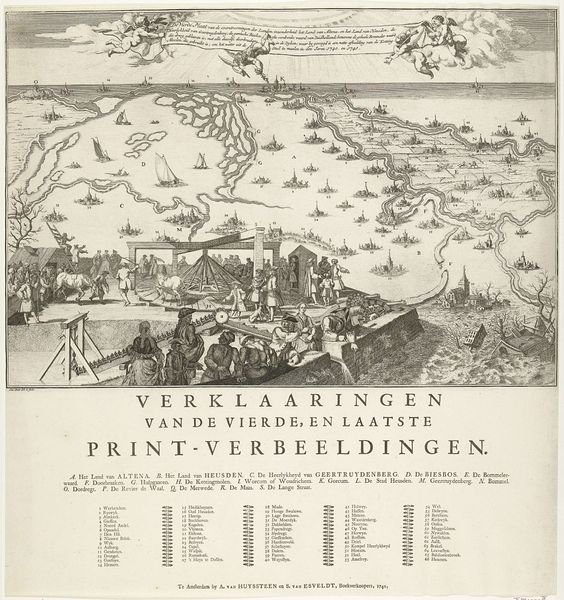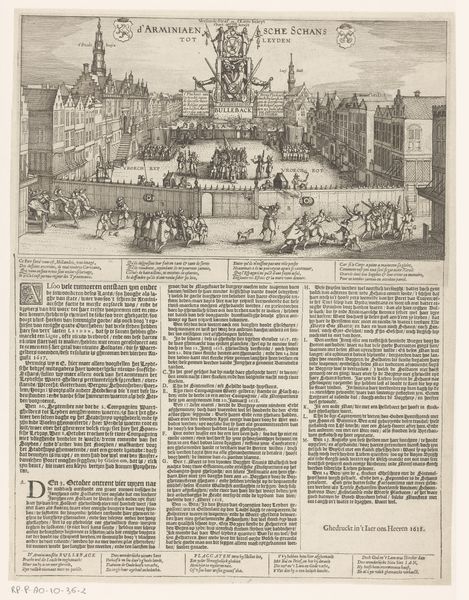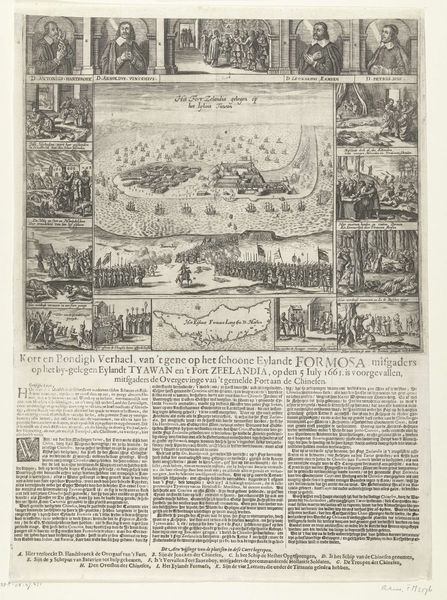
Verovering van Bonn en andere Duitse steden door de prins van Oranje, 1673 1673
0:00
0:00
print, engraving
#
baroque
#
dutch-golden-age
# print
#
history-painting
#
engraving
Dimensions: height 535 mm, width 405 mm
Copyright: Rijks Museum: Open Domain
Editor: This is "Verovering van Bonn en andere Duitse steden door de prins van Oranje, 1673," or "Conquest of Bonn and other German cities by the Prince of Orange, 1673," created by Romeyn de Hooghe. It's an engraving printed on paper, currently housed in the Rijksmuseum. It's pretty detailed, almost like a map, but also seems to celebrate a military victory. What stands out to you when you look at this piece? Curator: I’m drawn to the way this image positions military victory not simply as an isolated event but as intricately connected to socio-political narratives of power. De Hooghe uses a visual language of conquest that simultaneously reinforces and interrogates Dutch identity at a crucial historical juncture. How does the glorification of Prince William of Orange and the depiction of the defeated 'Spanish forces' serve broader narratives of national identity? Editor: That's interesting. I guess I hadn't really thought about it in terms of identity. I was focused on just the battle and who was winning, but it makes sense that there’s more going on. The use of imagery definitely seems to emphasize Dutch power and legitimacy. Is there any indication of the human cost? Curator: Precisely! Notice how the representation of warfare is almost ornamental, lacking in the gritty realities often associated with conflict. What does this calculated elision suggest about the role of art in constructing historical narratives? I find it really telling that the "losers" are broadly generalized. Who wins and loses from this specific visualization? Editor: It seems like that approach really flattens the complexities and lived experiences. Highlighting whose stories get told – and how – provides a valuable perspective. It prompts a deeper look at historical and societal dynamics that shape both artistic creation and historical perception. Thanks! Curator: Exactly! We have seen how analyzing even what is left out of an artwork can expose those crucial underlying narratives.
Comments
No comments
Be the first to comment and join the conversation on the ultimate creative platform.
